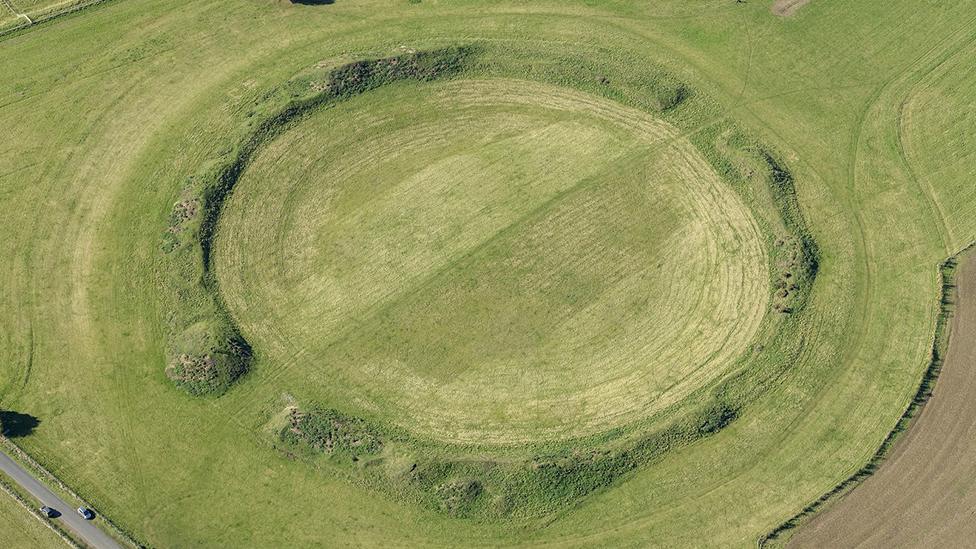Thornborough Henges unlock Yorkshire's ancient past
- Published
Drone footage from above reveals the markings of the site near Ripon
About 5,000 years ago, the Thornborough Henges in what is now North Yorkshire would have dominated the surrounding landscape.
What would have been three striking white monuments, now known as the "Stonehenge of the North", were covered in gypsum and their banks are believed to have towered up to 23ft (7m) high.
According to historians, anyone stood inside the circular earthworks in Neolithic times would only have been able to see the vast sky above them.
Cut off from the landscape and enclosed in this huge human-made arena, our ancient ancestors would have felt "centred within nature" and could even have had a "cosmic experience", they say.
It is an experience that, in 2024, people can perhaps finally get just a taste of once again.
In February, public access to all three monuments was guaranteed when the whole complex was reunited under one owner - English Heritage - for what was believed to be the first time in 1,500 years.
But what could the Thornborough Henges complex, near modern day Ripon, tell us about those people who first stared up at the sky from the base of those towering banks?
According to Dr Jennifer Wexler, this once "historically ignored" site unlocks the mystery of the Neolithic people who built them, but who left behind no written record of their existence.
Dr Wexler, senior properties historian for English Heritage, said the earthworks contained "layers of history" which spanned thousands of years.
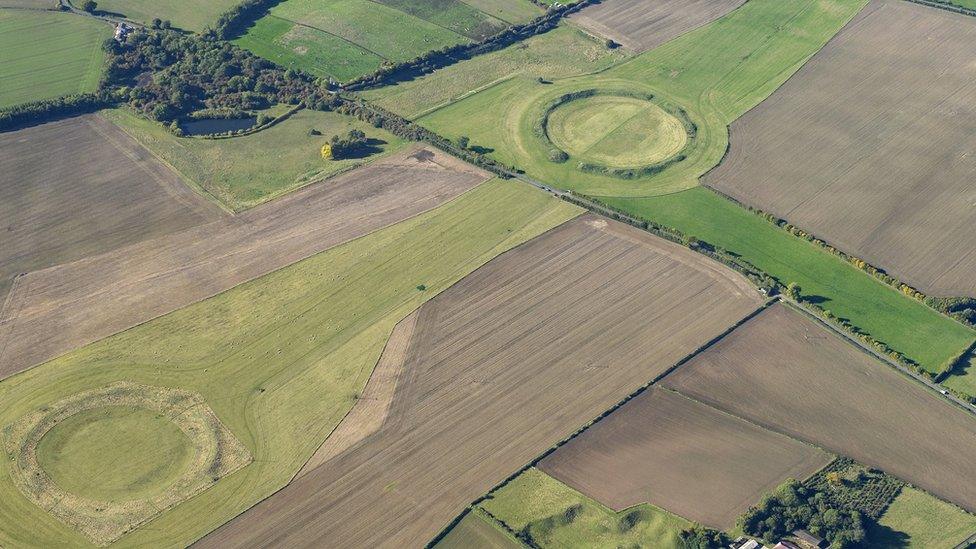
The Thornborough Henges have "layers of history" which span thousands of years, according to Dr Jennifer Wexler
Although estimated to have been built between 3500BC and 2500BC, Dr Wexler said burials took place at the site between 1,000 and 1,500 years before that.
"A pit lined with gypsum was discovered, with human remains dating back to the very early Neolithic period," she explained.
"This would have been the first few generations of farmers who travelled to Britain on small boats and brought a farming lifestyle and cattle with them."
A few hundred years before the construction of the Thornborough Henges, another earthwork had also been built on the site.
"This shows that the people had an ancestral connection with this space and generations kept returning to the site," Dr Wexler said.
All three earthworks would have been constructed around the same time, by digging ditches and piling the earth onto mounds, before covering them with gypsum, a white, almost sparkly, mineral.
According to Joe Savage, deputy head of interpretation at English Heritage, this would have required a "massive amount" of human labour.
"This is important because we pour energy into things that are significant," he explained.
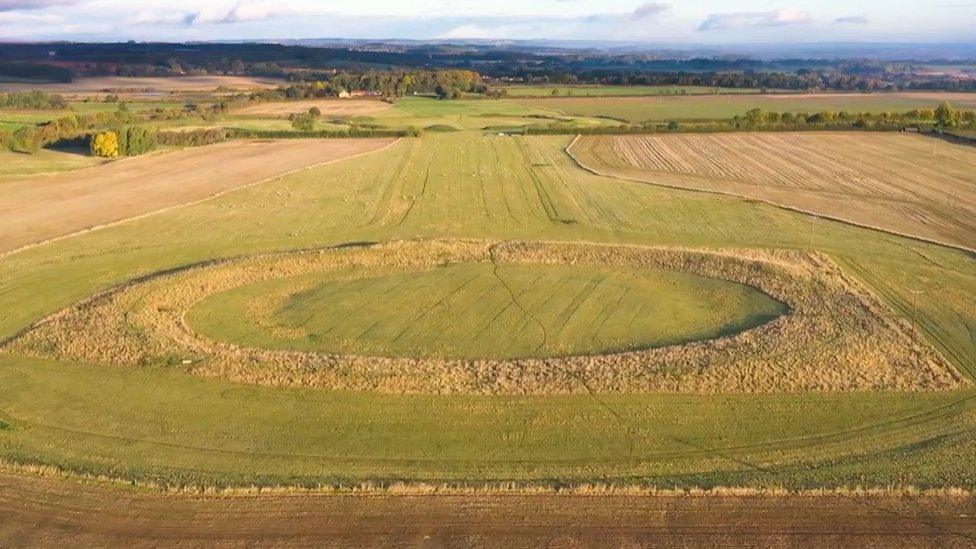
The henges could have been used as meeting places or somewhere to perform rituals, historians believe
The gypsum, which was readily available in the area, most likely had significance as well, Mr Savage said.
As the landscape had many sinkholes, the mineral would almost "bubble up from the underworld", perhaps symbolising a gift to the Neolithic people.
Its sparkly quality would have also made the earthworks "awe-inspiring, like a castle or cathedral", according to Mr Savage.
"There would have been a dramatic sense of being inside and outside of the henge," he said.
"The massive walls would have made it so that you could only see the sky above you. There was a sense of being enclosed and cut off from the world in a huge arena.
"The landscape is a natural bowl, then the human-made hills would have centred you within nature."
Meanwhile, according to Dr Wexler, like many other monuments of the era also covered in white material, the gypsum could have represented stars, bones of the ancestors, or even luck.
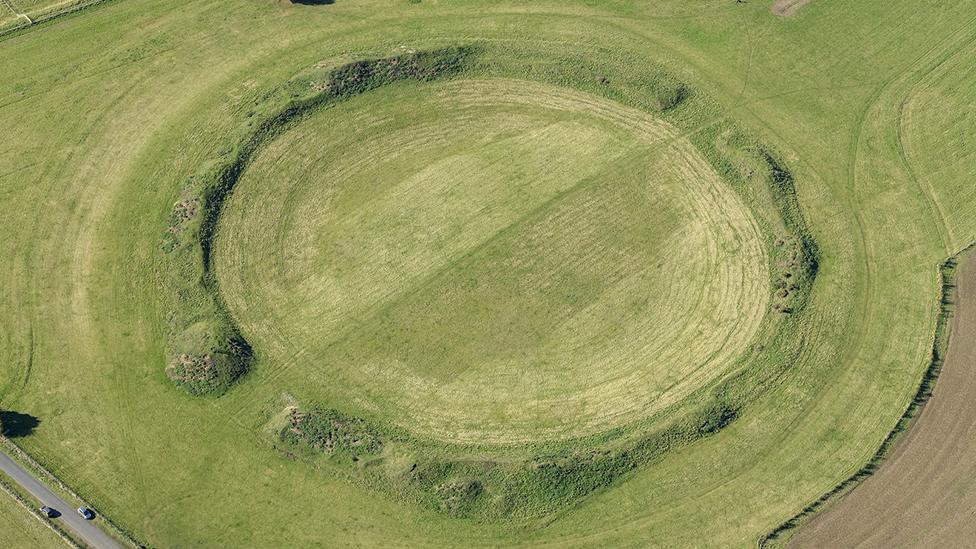
Each earthwork circle at the Thornborough Henges site, near Ripon, is 656ft (200m) in diameter
Questions have also been raised about who would have been allowed into the henges, and who would be outside.
Historians have agreed that the Neolithic people did not live within the complex, as barely any archaeological treasures had been found buried there.
Instead, they believe it could have been a place to trade, celebrate and perform rituals.
"Evidence has been found of possible encampments around the henges, but not inside them," Dr Wexler said.
"We think gatherings there may have been seasonal and they could have been used as a social place to meet."
Mr Savage added: "We know they were human-centric and there would have been some spiritual importance.
"People could have walked through the henges as an act of procession. It was almost certainly a ritual landscape."
Very few theories can be ruled out completely, and some have even suggested that the henges could have been aligned with certain star constellations.
However, Dr Wexler said the positioning of the henges marked the natural route through the landscape and, with two entrances for each henge, people could have made a pilgrimage through each one.
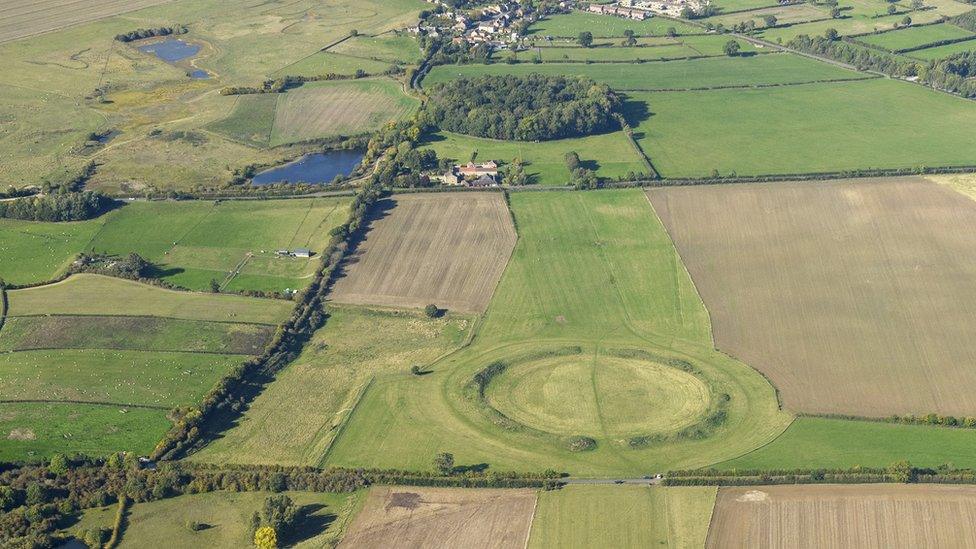
The northern henge, recently acquired by English Heritage, is covered in trees unlike the other henges
Today, the banks of the henges have eroded to a level much lower than they once were.
However, reuniting the whole site under one owner for the first time in a very long time, English Heritage recently acquired the northern henge, which is covered in trees and much better preserved.
Mr Savage said: "The trees on the northern henge were a later addition and not part of the original concept, but they have preserved the banks and protected them from erosion."
While the northern henge currently remains closed to the public for safety reasons, English Heritage said it hoped to reopen it in time for the summer.
Dr Wexler said that while the site had been "historically ignored" until the 1990s, from the viewpoint of 2024, things were very different.
The focus was now on "access and conservation work", she said.
"With new non-invasive technology, we hope to better date the henges and work out the sequence in which they were built."
Dr Wexler added that everyone involved was "so excited" to have the Thornborough Henges reunited and ready for people to retrace ancient footsteps.
"There is so much more to discover. They are magical," she said.
"It is like stepping back in time."

Follow BBC Yorkshire on Facebook, external, X (formerly Twitter), external and Instagram, external. Send your story ideas to yorkslincs.news@bbc.co.uk, external.
Related topics
- Published9 February 2024
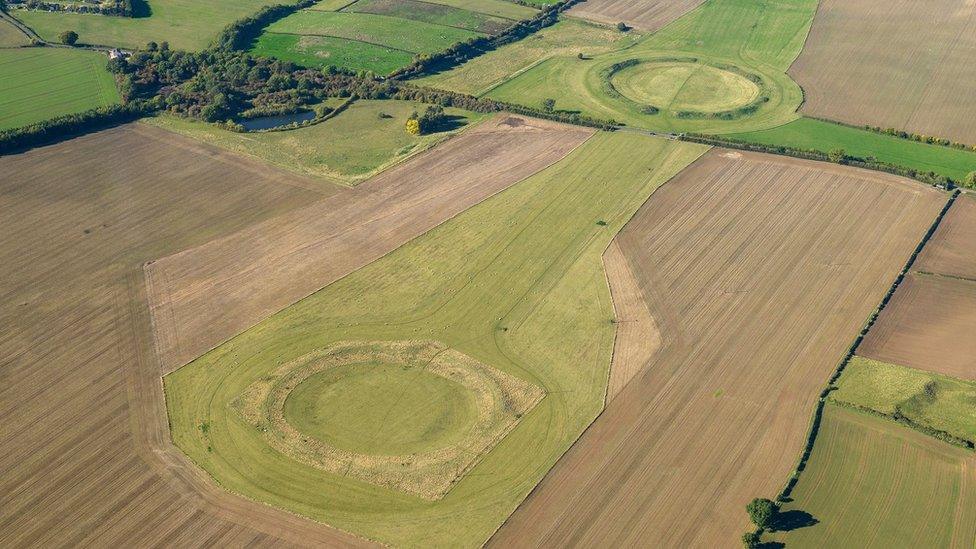
- Published3 February 2023
